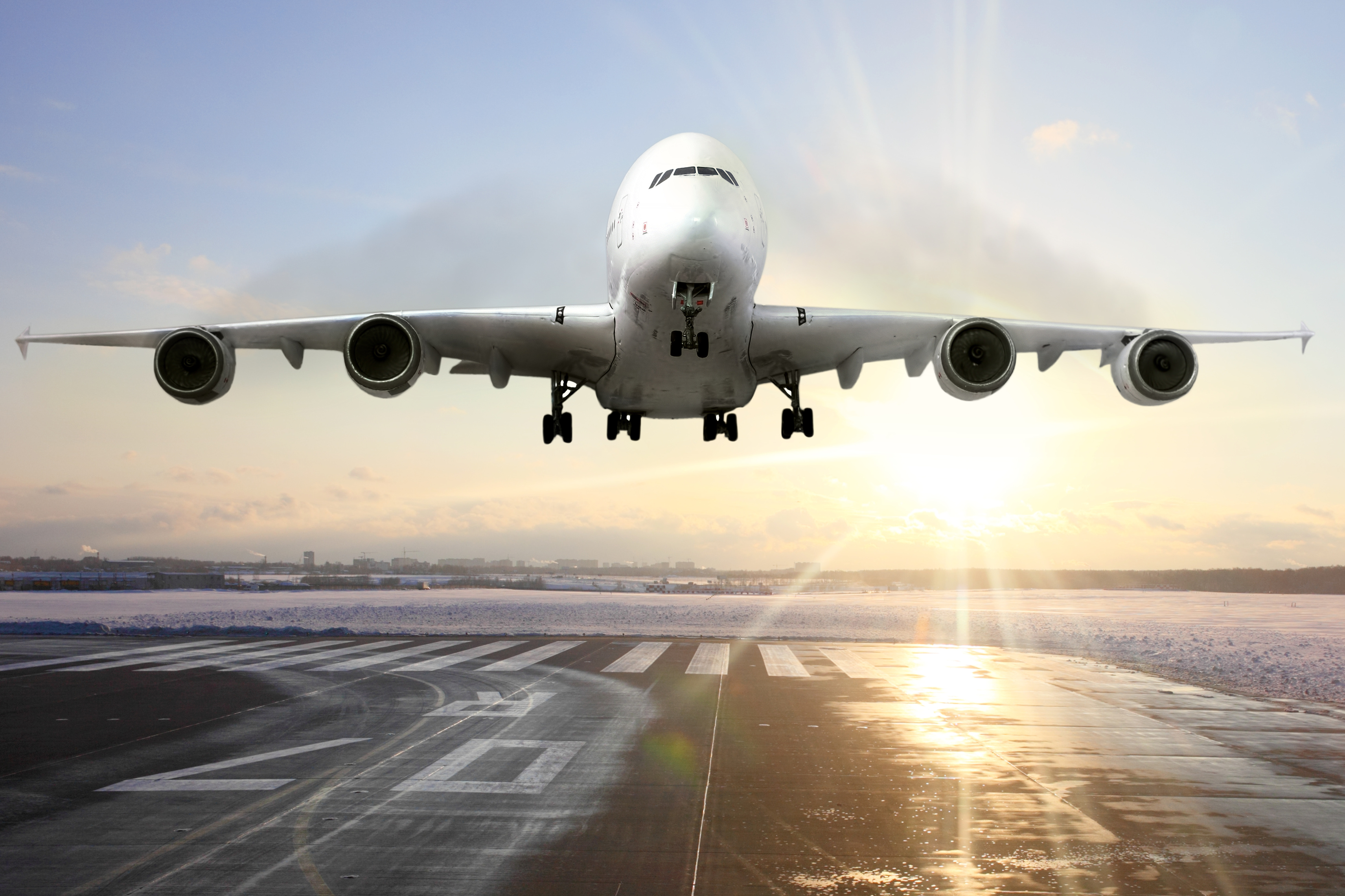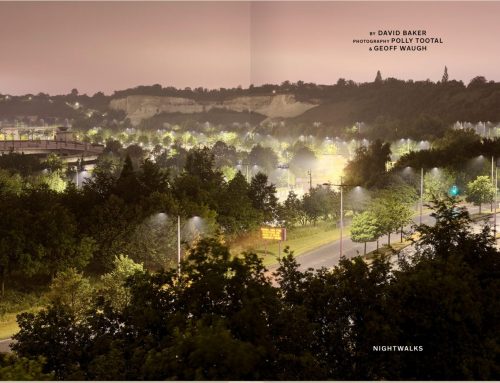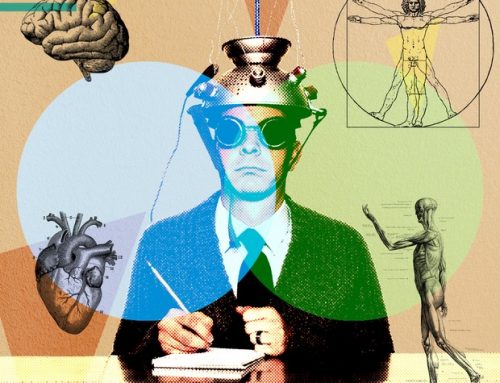Why there’ll soon be no need for the man at the front
Wired, December 2013
A black and red twin-propped Jetstream 31, registration G-BWWW, sits at BAE Systems’ private airfield at Warton, near Preston. It has seen better days: originally used by a Scottish distillery to ferry its executives up and down the country, it was sold to BAE in 1986 to be used as a flying laboratory and lost much of its bling. The interior shows some signs of its previous existence, with off-ivory plastic panels covering half the walls. But the rest now resembles Ripley’s spacecraft in Alien: there is a clutter of cables, pipes and shiny-silver insulation sheets. And where there were once occasional tables for in-flight drinks and cigars, there are now PCs on server racks, computer screens of various sizes and four utilitarian flight-seats for the engineers who operate them.
This is a plane for flying, not for comfort: when the engines start, high-spec noise-cancelling headphones are a necessity. But that’s OK, because this aircraft is at the centre of one of the most ambitious programmes attempted in the field of civil aviation: the development of pilotless planes.
In the past five years or so, there have been significant advances in small, unmanned aircraft. Drones are widely used by the military, and there are hundreds of civil applications — from aerial photography for estate agents to citizen map-making projects. But there are limitations to where drones can fly: military craft are confined to military airspace and have their own rules and understanding of risk; civilian drones have to stay within 500 metres of the operator, remain in their line of sight, fly at less than 120m, and keep more than 150m away from other people and buildings. And they can’t weigh more than 20kg.
Now Astraea, a consortium of seven UK-based multinationals and about 100 university departments and smaller companies, is taking drone technology into the world of civil aviation, with a view to changing the rules of the air so that a pilotless Boeing 737 could potentially share airspace with the easyJet flight to Santorini.
The challenge is significant. Not only would pilotless planes be many times larger than existing drones, and therefore less expendable if things go wrong; they would also share airspace with manned aircraft, so would have to behave as if they had a pilot on the flight deck, and that’s not easy to achieve.
“In civil airspace, unmanned aerial vehicles (UAVs) will have to be transparent and equivalent,” says Lambert Dopping-Hepenstal, BAE Systems’ engineering director of systems and strategy, and Astraea’s programme director. “They will have to appear to other aircraft and to air-traffic control as if they have a pilot on board, and will have to behave in the same way a piloted craft would. It’s unreasonable and uneconomical to redefine existing airspace to accommodate UAVs. Instead we have to find ways of introducing UAVs into existing airspace so they fly under the same rules.”
Pilotless planes will not be entirely autonomous. Like drones, they will be flown by an operator somewhere on the ground who sends commands to the UAV’s flight-management system (the “autopilot”), which then manages adjustments to the throttle, flaps and rudder to change heading or altitude, and to take off or land — similar to the automated fly-by-wire systems on many civil aircraft already. And like drones, pilotless planes will spend much of their time flying automatically on preset routes, with the ground pilot perhaps monitoring more than one aircraft at a time. But where military drones — should they lose communication with ground control — can either turn around and return to base or crash (relatively) harmlessly, actions like this aren’t possible in civil airspace. “We are not talking about flying without human oversight,” says Dopping-Hepenstal. “But if the aircraft loses the communication link, it has to react just like a manned aircraft: look out of the window like a pilot, follow the rules of the air and make decisions. And we have to ensure it can do this in ways that are at least as safe as equivalent manned aircraft, at least as good as the very best pilot.”
Dopping-Hepenstal and his team have split their task into four broad areas. Autonomy and decision-making (overseen by Qinetiq, based in Farnborough, alongside Rolls-Royce and software company AOS) covers how and when a UAV can govern its own actions, how it might manage complex manoeuvres such as pilotless air-to-air refuelling, and how it could monitor the health of its on-board systems and carry out in-flght repairs. A group of engineers at BAE Systems is devising a ground-based flight deck and the best way for ground pilots to interface with the craft. At EADS Cassidian, based in Newport, a team is developing communications networks to maintain links with aircraft that might be flying at high speed many thousands of kilometres from the operator — and at ways of keeping those links secure. And the detect-and-avoid group, led by Thales in Crawley, is finding ways of equipping the craft with the ability to “see” and avoid other craft in the air, as well as buildings, towers and the ground itself. “We have no illusions,” smiles Dopping-Hepenstal. “We are trying to do a lot.”
Astraea’s goal is to develop a set of rules that would allow civil airspace to be opened up to UAVs. And to do that its engineers need to show they the have considered every possible eventuality. Hence the Jetstream and its banks of on-board computers.
It’s a rare sunny day in north-west England in April, and the Astraea air crew is at last ready for an important test flight over the Irish Sea. On trial today is the craft’s ability to detect oncoming aircraft and work out, as a pilot would, how to take evasive action. In a drab meeting room in BAE Systems’ Flight Operations building at Warton, Rob Monfea, the company’s senior flight-test engineer, is leading the flight briefing. Around the table are Neil Dawson, the project’s chief test pilot, and Graham Morgan, from the National Flying Laboratory Centre, Cranfield, the captain and first officer for today’s flight. Also present are Bob Fraser, a hugely experienced airman who will be piloting the plane from the ground, and Rob Dixon, Rod Buchanan and Duncan Casey, BAE engineers working on the project. Monfea outlines the mission brief. The Jetstream will trace an irregular hexagon over the Irish Sea, taking in five waypoints before landing again, about an hour later, at Warton. Take off and landing will be handled by Dawson and Morgan — the Civil Aviation Authority (CAA) has not yet given the go ahead to do these remotely — but Fraser will take over full control at 600m. At some point on the trip, Buchanan will insert a virtual oncoming aircraft into the Jetstream’s flight-management system, and if all goes well, the plane will detect it and suggest to Fraser evasive action. Trials with real oncoming aircraft will come later.
The challenges facing the Astraea team are manifold, but Detect and Avoid is arguably the toughest they have to tackle. Although pilots spend a lot of their time looking at charts and instruments, they also have heightened visual abilities which enable them to see, and immediately react to, oncoming hazards. A pilotless plane will replicate this to the same or greater level. And, once an oncoming aircraft is detected, the question arises as to who or what — the ground pilot or the on-board flight-management system — decides on what avoiding manoeuvre to take.
This question of autonomy is central to the Astraea project. To some in the industry, UAVs should be little more than model planes in the air, controlled by skilled and well-informed pilots on the ground. Others, however, see advantages in keeping humans as far away from the process as possible. Chris Elliot, a London and Lausanne-based engineer who is acting as a consultant to Astraea, is in the second camp. He likes to point out, for example, that the safe landing of the stricken US Airways flight 1549 on the Hudson River in 2009, for which the captain, Chesley Sullenberger, was widely praised, was due less to human ingenuity than to the complex and fast-reacting algorithms of the Airbus software, which, he says, “were able to squeeze out the last few metres of a glide. The pilot followed the textbook well, making the call to land rather than fly round again. But that’s exactly what a system can do.” For the moment, though, Elliot is in the minority, and Astraea’s plans are for pilotless planes to be controlled most of the time by humans on the ground. But for that to happen, the communications link between them and ground control needs to be secure and fast, with as little latency — the delay inevitable in all long-distance electronic communications — as possible.
In conventional flight the main channel of communication is between the pilot and air-traffic control. In a UAV, air-traffic control has to be able to communicate with the ground pilot — and the ground pilot has to be able to send commands to, and get readings from, the craft in the air, as fast and as accurately as if they were actually on the flight deck itself. To achieve such a robust and secure system — and take into account that air-traffic control and ground control could easily be on opposite sides of the globe — Astraea’s communications team at EADS Cassidian initially built a satellite-based radio-communications network to link all three nodes, but this proved unsatisfactory.
“If you use satellites,” says Gary Clayton, EADS’s head of research and technology, “there is some latency, but we found that with a low level of air-traffic, controllers could handle it. But with high traffic they couldn’t deal with it at all — the delay was just too great. Once you have more UAVs in the air, you have to find an alternative to satellites.”
One promising solution comes from the world of meshed networks: a fleet of UAVs could form an ad hoc network in the air, with aircraft passing messages between themselves and the ground. This would make the network more robust and would, says Clayton, remove latency issues. Clayton and his team tested this idea in October 2012 by running a trial on seven Minis, fitted with low-power radios, which they drove through one of the least radio-friendly locations possible, a high-sided valley in the Brecon Beacons in south Wales, while attempting to maintain communication between them and base.
“As well as the steep side of the hills,” he says, “there were trees covered in vapour and water reflections from lakes [all enemies to clear radio reception], and we found the network remained totally robust.” As a bonus, the use of meshed networks (or swarm communications) requires no fixed infrastructure, such as regularly spaced radio masts, and, says Clayton, no ground radio technicians either. The next step is to replicate the Mini experiment in the air.
Even the best communications systems fail sometimes, however, and that is when a UAV will have to “see” the situation it is in and decide how to act. “If a pilot has to make an emergency landing,” says Dopping-Hepenstal, “he knows from maps where there is a suitable field nearby. But he also looks out the window to check there isn’t a country fair taking place on the field that weekend.”
One solution being tested by BAE Systems in Preston is an array of six cameras, fitted to the nose of a UAV, that continually monitor the plane’s surroundings — something that is already an improvement on a pilot’s sporadic looks out of the window. But whereas human sight is backed up by a complex and little understood set of processes in the brain, all a UAV has to go on is a constantly changing set of pixels, through which it has to decide if what it is seeing is an oncoming plane or just a different shade of cloud.
According to Buchanan, the team is making good progress in this direction, with the system picking out specks of black against a background of monotone cloud. But he won’t be drawn on how the algorithms work or where the system’s limitations currently lie. And it is unclear how a UAV could understand that what it was seeing was the aforementioned country fair.
Despite this, Dopping-Hepenstal is optimistic that there will soon be a breakthrough and that, moreover, a sentient “seeing” system for planes will be taken up by piloted aircraft too. “This will feed back into general aviation,” he says. “If the system can be made cheaply enough, all aircraft will have it.”
Few places could be less like a flight deck than the brick-and-concrete hut that Bob Fraser and Rob Dixon sit in to pilot Astraea test flights over the Irish Sea. Perched at the edge of the airfield, its blinds are drawn to keep out the early-afternoon Sun. Inside there are just a couple of office desks, some swivel chairs, a telephone and a whiteboard on the wall. And instead of the array of dials and switches that make up a modern flight-deck, there is a decidedly ordinary-looking PC screen, keyboard and mouse, through which Fraser will be flying the plane. “Joysticks are too hard,” says Dopping-Hepenstal, “and there are better ways of giving instructions.”
What Fraser sees in front of him is an aviation map of the area showing the Jetstream’s location and heading, and those of other aircraft in the vicinity. To its right is a display showing the plane’s position in longitude and latitude, its heading in degrees, and its altitude, speed, radio frequency and other information from the flight deck, plus an indication of who — Fraser or the pilots in the air — has control over the plane. And there are blank boxes where Fraser can type information — a new heading, a change of altitude — which is then transmitted to the plane.
The CAA is being very cautious: not everything Fraser does will have an immediate effect. He will be able to change the aircraft’s heading, but any change in altitude, which also involves adjusting the plane’s throttle and changing speed, has to be physically done by the pilots on board. Although this limitation is currently in place for regulatory reasons, this is probably a pretty good preview of what flying a pilotless plane will actually be like, with systems on board the aircraft making the final decision about exactly how to react to the ground pilot’s instructions.”We are not building a cockpit on the ground,” says Fiona Cayzer, who is the head of Astraea’s human/UAV interface team. “We are not asking [a pilot] to fly the UAV. We are asking him to monitor and supervise it.”
This, though, brings with it its own set of problems.”If we want vehicles to be highly autonomous, if people are just monitoring and supervising, what does that do to their concentration and boredom levels?” she says. “And what about shift-changes? UAVs can fly 24/7 but humans can’t. People on the ground will have to work shifts and change between different operations. What does this mean? And how do you have positive transfer of control? You can’t just log off and then have someone else log on. This is something we still need to crack and we are running numerous experiments on it, both in simulations and in the air.”
It’s 2pm, and as Fraser and Dixon take up their positions in the ground-control hut, on board the Jetstream, Dawson and Morgan are completing their pre-flight checklist, which includes, rather disarmingly, switching on the “No Smoking” and “Fasten Seatbelts” signs. Behind them, Buchanan and Casey are booting up the onboard computers that will link Fraser with the aircraft’s flight management system. We taxi to the edge of the runway and, after Dawson rechecks a panel of switches over his head that show that he, rather than Fraser, has control over the plane, we accelerate into a surprisingly fast take-off and head out over the Irish Sea. In about a minute we reach an altitude of 610 metres and Dawson casually hands over the controls of his plane to Fraser, and sits back. Over the headphones, air-traffic control instructs Fraser to turn towards the first waypoint. There’s a slight pause and then the plane banks to the right. It’s an unnerving and exhilarating moment. We are no longer in control: we are being flown by a man on a PC somewhere on the ground below us.
For most of the flight, Buchanan and Casey monitor how communications between Fraser, air-traffic control and the plane are performing. At one point there’s a warning of a microlight in the vicinity, which Dawson confirms by looking out of the window — a task an unmanned craft will have to do — and then the moment comes for Buchanan to insert the virtual oncoming plane into the Jetstream’s flight management system.
The imposter is nothing more than a triangle that has appeared on the map but it feels very real, heading towards us on a collision course. But almost immediately the Jetstream calculates a change of course to avoid it and transmits the suggested route back down to ground control.
At this point Fraser can accept the plane’s recommendation or reject it and program one of his own. We’re expecting Fraser to press his Accept button, but then air-traffic control alerts us to a real hazard, another aircraft coming our way. Almost certainly another transponderless microlight, it isn’t showing up on our onboard map but Fraser takes instructions from air-traffic control, rejects the Jetstream’s proposed change of route, keys in a different heading and steers us neatly between it and the virtual threats Buchanan has introduced. We watch as the dangerous arrow continues on its way behind us (the microlight has disappeared), and then turn back over the final waypoint. The whole operation has taken only a minute but it’s success is significant, demonstrating a partnership between craft and ground pilot that the CAA will have to be sure of before opening up the air to UAVs. With an audible smile on his face, Fraser hands back control, and Dawson and Morgan fly us back to Warton to land.
The Astraea project has now been running for seven years and has almost used up its initial £62 million of funding — half of which came from the companies in the consortium and half from the UK government. Dopping-Hepenstal says its technical readiness is now at about five on a scale of one to ten, and the idea, subject to funding and government support, is to have unmanned aircraft in the skies by the end of the decade. He insists the aim is not to replace pilots but instead to expand what aviation is capable of. “This is a new branch of aerospace, doing dangerous things pilots can’t do.” Such as fighting forest fires or search and rescue operations, for instance.
Pilots will certainly find their roles changing, however. One idea is to have a single operator supervising a fleet of aircraft, something that already happens with military UAVs. But both Fraser and Cayzer are sceptical.
“When we looked into having one pilot controlling two or three UAVs in the civil environment we found that normal interactions with air-traffic control drove up the workload too much,” says Cayzer. “The pilot has to focus on one UAV at a time. I think it might be a possibility, though I have no evidence for this, to make UAVs fly in a formation or a swarm and maybe one person could control the lead vehicle and the others would follow. And maybe air-traffic control could message UAVs directly. But then you get a difficult situation: if something goes wrong, who is legally responsible?”
Chris Elliot, however, believes the aim of the project should be to reduce the pilot’s role significantly. “Most aircraft accidents are the result of pilot error,” he says. “There might be a very good reason that UAVs are better at managing themselves than people on the ground. And as we move from pilots on board to pilots on the ground, what happens to the idea of the last man to leave the ship? Are ground pilots inevitably going to take more risks as they are not on board themselves?”
“We will never see entirely unmanned passenger aircraft,” says Mary “Missy” Cummings, associate professor of aeronautics and astronautics at MIT who is herself a veteran US Air Force pilot. “There always needs to be someone aboard to stop people getting drunk and make sure they have their seatbelts on. But when it comes to monitoring systems and detected anomalies, computers always do it better. Autoland is always better [than a human-controlled landing]. And autofly uses the minimum fuel because it can adjust more quickly and more often than the human muscular system.
“That said, it’s the human resistance, from pilots and passengers, that is the hardest sociotechnical problem, and there is a lot of interesting research going on into trust in technology. That’s why using UAVs first for cargo is so important. We will see it in use, something will go wrong, and we will work out how to solve that.”
And, she says, people are already flying on UAVs, they just don’t realise it.”Airbus aircraft do it quite well. Any of their aircraft has the ability for point-to-point flying. But commercial pilots find it boring. However, we need more planes and we also need to space them closer together, and UAVs are the way to do it.
“We have to let these planes fly themselves.”






